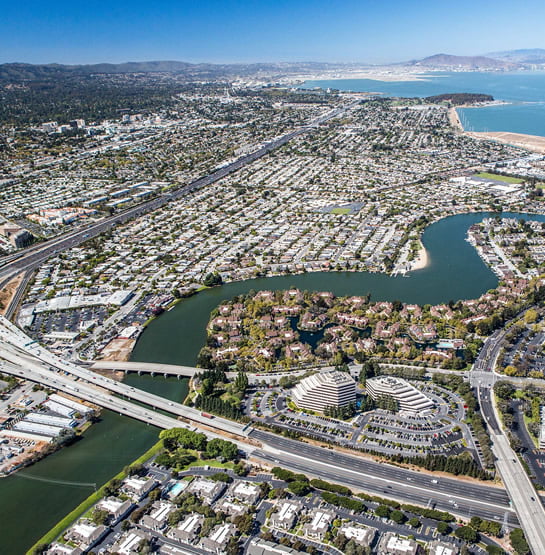
San Mateo County
San Mateo is a larger medium-sized coastal city located in the state of California. With a population of 105,661 people and 26 constituent neighborhoods, San Mateo is the 70th largest community in California.
San Mateo home prices are not only among the most expensive in California, but San Mateo real estate also consistently ranks among the most expensive in America.
105,661
Population
$1,074,552
Median Home Value
$4,497/month
Average Rent
$124,842
Median Household Income
19/100
Crime Index
Living in San Mateo County
San Mateo is a decidedly white-collar city, with fully 86.42% of the workforce employed in white-collar jobs, well above the national average. Overall, San Mateo is a city of professionals, managers, and sales and office workers. There are especially a lot of people living in San Mateo who work in management occupations (15.52%), office and administrative support (9.76%), and sales jobs (8.53%).
Also of interest is that San Mateo has more people living here who work in computers and math than 95% of the places in the US.
Another interesting thing about San Mateo, despite not being a huge city, is that there is a relatively high proportion of people living here who are young, single, and upwardly-mobile professionals. This makes it a good choice for other relocating single professionals. Here, these young singles will find many others like themselves, with opportunities for friendships, socializing, romance, and fun.
San Mateo is also nautical, which means that parts of it are somewhat historic and touch the ocean or tidal bodies of water, such as inlets and bays. Quite often, nautical areas such as these attract visitors and locals who come to enjoy the scenery and various waterfront activities.
Like elsewhere in America, most people in San Mateo use a private automobile to get to work. But notably, a substantial number of San Mateo‘s citizens do make use of public transit in their daily commute, primarily riding the train. This helps more people get to work with less air pollution, and require fewer highways to get them there.
Do you have a 4-year college degree or graduate degree? If so, you may feel right at home in San Mateo. 54.20% of adults here have a 4-year degree or graduate degree, whereas the national average for all cities and towns is just 21.84%.
The per capita income in San Mateo in 2018 was $62,784, which is wealthy relative to California and the nation. This equates to an annual income of $251,136 for a family of four. However, San Mateo contains both very wealthy and poor people as well.
San Mateo is an extremely ethnically-diverse city. The people who call San Mateo home describe themselves as belonging to a variety of racial and ethnic groups. The greatest number of San Mateo residents report their race to be White, followed by Asian. San Mateo also has a sizeable Hispanic population (people of Hispanic origin can be of any race). People of Hispanic or Latino origin account for 25.07% of the city’s residents. Important ancestries of people in San Mateo include Irish, German, Italian, English, and European.
Foreign born people are also an important part of San Mateo’s cultural character, accounting for 34.69% of the city’s population.
The most common language spoken in San Mateo is English. Other important languages spoken here include Spanish and Chinese.
Housing Market Trends
With a population of 105,661, 38,549 total housing units (homes and apartments), and a median house value of $1,074,552, San Mateo house prices are not only among the most expensive in California, San Mateo real estate also is some of the most expensive in all of America.
Single-family detached homes are the single most common housing type in San Mateo, accounting for 43.50% of the city’s housing units. Other types of housing that are prevalent in San Mateo include large apartment complexes or high rise apartments ( 40.04%), row houses and other attached homes ( 9.73%), and a few duplexes, homes converted to apartments or other small apartment buildings ( 6.52%).
People in San Mateo primarily live in small (one, two or no bedroom) single-family detached homes. San Mateo has a mixture of owner-occupied and renter-occupied housing.
At the end of World War II, American soldiers returned home triumphant and, with the help of the GI Bill, built homes by the millions on the edges of America’s cities. These homes were predominantly capes and ranches, modest in size, but built to house a growing middle-class as the 20th century became the American century. San Mateo’s housing was primarily built during this period, from the ’40s through the ’60s. A full 49.21% of the city’s housing hails from this era. Other housing ages represented in San Mateo include homes built between 1970-1999 ( 31.77%) and housing constructed before 1939 ( 10.41%). There’s also some housing in San Mateo built between 2000 and later ( 8.62%).
